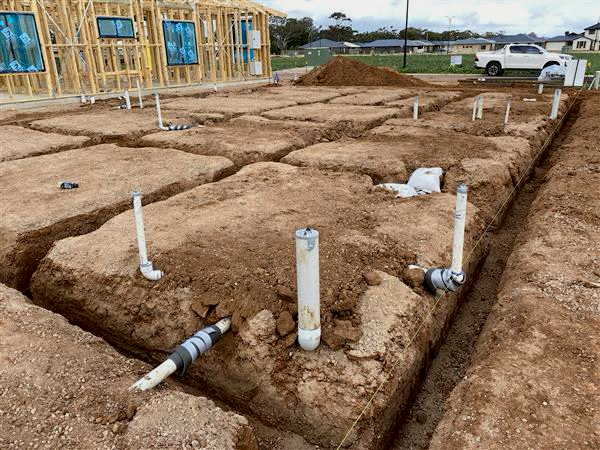Have you ever wondered what keeps towering skyscrapers and cozy homes standing strong? The secret lies beneath the surface—in the foundation. When constructing any structure, the base must be sturdy enough to support the load above it.
Different projects require different types of footing to ensure long-lasting stability and safety. Choosing the right one depends on factors like soil conditions, load distribution, and structural design. Let’s read about it in detail.
Spread Footings: A Popular Choice for Stability
Spread footings are one of the most commonly used foundation types. They help distribute the load of a building over a larger area, reducing the risk of settlement. They are often used in residential homes, small commercial buildings, and structures with moderate loads. They come in various forms, including isolated, combined, and continuous footings. The key advantage is their ability to provide strong support while keeping costs manageable. Proper design and soil assessment are essential to ensure their effectiveness and long-term stability.
Strip Footings: Ideal for Load-Bearing Walls
Strip footings are an excellent option for structures that feature long, continuous walls. They extend along the entire length of a wall, ensuring even load distribution. These footings work best in areas where soil conditions are stable and can support the weight of the structure. Builders often use them in homes, retaining walls, and low-rise commercial buildings. If the ground is weak, additional reinforcement may be necessary to prevent settlement issues. In cases of uneven soil conditions, engineers may recommend wider or deeper strip footings to enhance stability.
Raft Footings: The Ultimate Load Distributors
When the soil underneath a structure is weak or uneven, raft footings provide a strong solution. They spread the building’s weight across the entire foundation, reducing pressure on any single point. These footings are commonly used for large commercial buildings, industrial structures, and areas with loose soil. They are also effective in preventing differential settlement, which can lead to cracks and structural damage. While they require more materials, the long-term benefits outweigh the costs.
Pile Foundations: Strength in Depth
For buildings constructed on weak soil or areas prone to moisture, pile foundations offer unmatched support. These deep foundations transfer the load to a more stable layer of soil or rock below the surface. Pile footings are essential for bridges, high-rise buildings, and structures near water bodies. They come in two main types—end-bearing piles and friction piles—each designed to provide maximum strength. Though installation can be complex, they ensure durability in challenging conditions.
Combined Footings: When Space is Limited
In cases where two or more columns are close together, combined footings provide an efficient solution. Instead of separate bases for each column, a single footing supports multiple loads. This type is commonly used in urban areas where space constraints make individual footings impractical. Engineers design them to distribute weight evenly and prevent foundation failures. By carefully adjusting dimensions, builders can optimize support while saving space and materials.
Stepped Footings: Perfect for Sloping Sites
Construction on sloped terrain requires a specialized approach, and stepped footings offer the perfect answer. These foundations follow the natural contour of the land, preventing uneven settlement. Builders use them in hilly areas, basement construction, and sites with significant elevation differences. By breaking the foundation into levels, they maintain structural integrity while reducing excavation costs. Proper design ensures that each step effectively distributes weight without compromising stability.
Types of footing are essential in every construction project to ensure a strong and reliable foundation. Selecting the appropriate footing is crucial for safety, durability, and cost-effectiveness. Whether it’s spread, strip, raft, pile, combined, or stepped, each type serves a unique purpose. Understanding these options helps ensure a secure and long-lasting structure. Investing in the right footing is a step toward a stable and resilient building.
Cassia Rowley is the mastermind behind advertising at The Bad Pod. She blends creativity with strategy to make sure ads on our site do more than just show up—they spark interest and make connections. Cassia turns simple ad placements into engaging experiences that mesh seamlessly with our content, truly capturing the attention of our audience.


